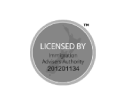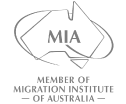So, you’re considering a move to the land Down Under? Maybe the allure of a robust economy, a laid-back lifestyle, or simply the opportunity to experience a new corner of the world has caught your attention. Whatever your reasons, migrating to Australia is a significant undertaking. This comprehensive 12-month timeline breaks down the process into manageable steps, helping you navigate the complexities and stay on track for a successful relocation. Let’s dive in and chart your course to a new life in Australia.
Month 1-2: Self-Assessment and Initial Research
These first couple of months are all about introspection and information gathering. A solid foundation here will pave the way for a smoother journey.
Assess Your Eligibility
- Visa Options: Australia boasts a range of visas tailored to different circumstances. Start by exploring the Department of Home Affairs website to understand the various visa categories. Consider factors like your age, skills, qualifications, and financial capacity. For example, skilled migrants often consider the Subclass 189 (Independent) visa, the Subclass 190 (State Nominated) visa, or the Subclass 491 (Regional) visa.
- Points Test: Many skilled visas operate on a points-based system. Use the official points calculator to estimate your score. This will give you a realistic understanding of your chances. Factors like age, English proficiency, education, and work experience all contribute to your score.
- Skills Assessment: Research the requirements for your occupation. Most skilled visas require a positive skills assessment from a relevant assessing authority. Check the detailed list of assessing authorities on the Department of Home Affairs website.
Research Your Destination
- City Selection: Australia is a vast and diverse country. Melbourne, Sydney, Brisbane, Perth, and Adelaide each offer a unique lifestyle and opportunities. Research the economic landscapes of each city, job markets, climate, cost of living, and cultural attractions to determine which best aligns with your priorities.
- Cost of Living: Understand the financial implications of relocating. Websites like Numbeo provide detailed comparisons of the cost of living in different cities. Factor in housing, transportation, food, healthcare, and education expenses.
- Job Market: Explore the job market for your profession. Platforms like LinkedIn, Seek, and Indeed provide insights into available positions and salary expectations.
Month 3-4: Professional Advice and Documentation
With your initial research complete, it’s time to seek expert guidance and start gathering the necessary documentation.
Consult a Registered Migration Agent
- Navigate Complexity: Australian migration law can be intricate. A registered migration agent can provide personalized advice, assess your eligibility, and guide you through the visa application process. They can also help you avoid common pitfalls that could lead to visa refusal.
- Strategic Planning: A migration agent can help you develop a strategic plan tailored to your specific circumstances, maximizing your chances of success.
Gather Essential Documents
- Passport: Ensure your passport is valid for at least six months beyond your intended stay in Australia.
- Birth Certificate: Obtain a certified copy of your birth certificate.
- Educational Qualifications: Gather transcripts, diplomas, and certificates related to your education.
- Work Experience: Collect employment references detailing your job title, responsibilities, and dates of employment.
- English Language Proficiency: Prepare for and take an English language test, such as the IELTS or PTE. Aim for the highest possible score to maximize your points.
Month 5-6: Skills Assessment and EOI Submission
This phase involves formally assessing your skills and expressing your interest in migrating to Australia.
Skills Assessment
- Application Preparation: Carefully review the requirements of the relevant assessing authority for your occupation. Prepare your application meticulously, ensuring all documents are certified and translated if necessary.
- Lodgement and Monitoring: Lodge your skills assessment application and diligently monitor its progress. Be prepared to provide additional information or clarification if requested.
- Address Negative Assessments: If you receive a negative skills assessment, don’t despair. Consult with your migration agent to explore alternative pathways or options for addressing the issues raised.
Expression of Interest (EOI)
- SkillSelect: Once you have a positive skills assessment, you can submit an Expression of Interest (EOI) through SkillSelect. This is an online system that allows the Australian government to identify and invite skilled migrants to apply for visas.
- Detailed Information: Provide accurate and detailed information about your skills, qualifications, and work experience in your EOI.
- Visa Subclass: Indicate the visa subclass you are interested in applying for (e.g., Subclass 189, 190, or 491).
- State Nomination (if applicable): If you are seeking state nomination, research the requirements of each state or territory and indicate your preferred location in your EOI. Each state has its own specific criteria and occupation lists.
Month 7-9: Visa Application and Health Checks
If your EOI is successful, you’ll receive an invitation to apply for a visa. This is a crucial stage that requires careful attention to detail.
Visa Application
- Online Application: Complete the online visa application form accurately and thoroughly. Provide all required information and supporting documents.
- Document Submission: Upload certified copies of all necessary documents, including your passport, birth certificate, educational qualifications, work experience references, English language test results, and skills assessment.
- Application Fee: Pay the visa application fee.
- Police Clearance Certificates: Obtain police clearance certificates from all countries where you have lived for 12 months or more in the past 10 years.
Health Examinations
- Panel Physician: Undergo medical examinations with a panel physician approved by the Australian government. These examinations assess your health status and ensure you meet the health requirements for migration to Australia.
- X-Rays and Blood Tests: Be prepared for x-rays and blood tests as part of the health examination process.
Month 10-11: Visa Grant and Pre-Departure Planning
The final stretch! With your visa granted, it’s time to prepare for your move.
Visa Grant
- Confirmation: Once your visa is granted, you will receive an official notification from the Department of Home Affairs.
- Visa Conditions: Carefully review the conditions of your visa, including the validity period and any restrictions on work or study.
Pre-Departure Arrangements
- Accommodation: Arrange temporary accommodation for your arrival in Australia. Consider booking an Airbnb or serviced apartment for the first few weeks while you search for permanent housing.
- Shipping Your Belongings: Research international shipping companies and obtain quotes for shipping your household goods and personal belongings.
- Financial Arrangements: Open an Australian bank account and transfer funds to cover your initial expenses. Websites like OzForex are useful for this.
- Health Insurance: Arrange health insurance coverage for yourself and your family.
- Flights: Book your flights to Australia.
- Inform Important Parties: Make sure to inform all important parties of your move, like banks, doctors, etc.
Month 12: Arrival and Settlement
Welcome to Australia! Now it’s time to settle in and start building your new life.
Arrival
- Customs and Immigration: Upon arrival in Australia, you will need to clear customs and immigration. Have your passport and visa readily available.
- Initial Settlement:
- Finalize your permanent housing arrangements.
- Register with Medicare, Australia’s universal healthcare system.
- Obtain an Australian driver’s license.
- Enrol your children in school.
- Start networking and job searching.
Ongoing Integration
- Community Involvement: Get involved in your local community to build connections and make friends.
- Professional Development: Continue to develop your professional skills and network within your industry.
Conclusion
Migrating to Australia is a marathon, not a sprint. By following this 12-month timeline, you can break down the process into manageable steps and increase your chances of a successful relocation. Remember to seek professional advice from a registered migration agent, gather all necessary documentation, and stay organized throughout the journey. With careful planning and execution, you can look forward to a bright future in the land Down Under.










